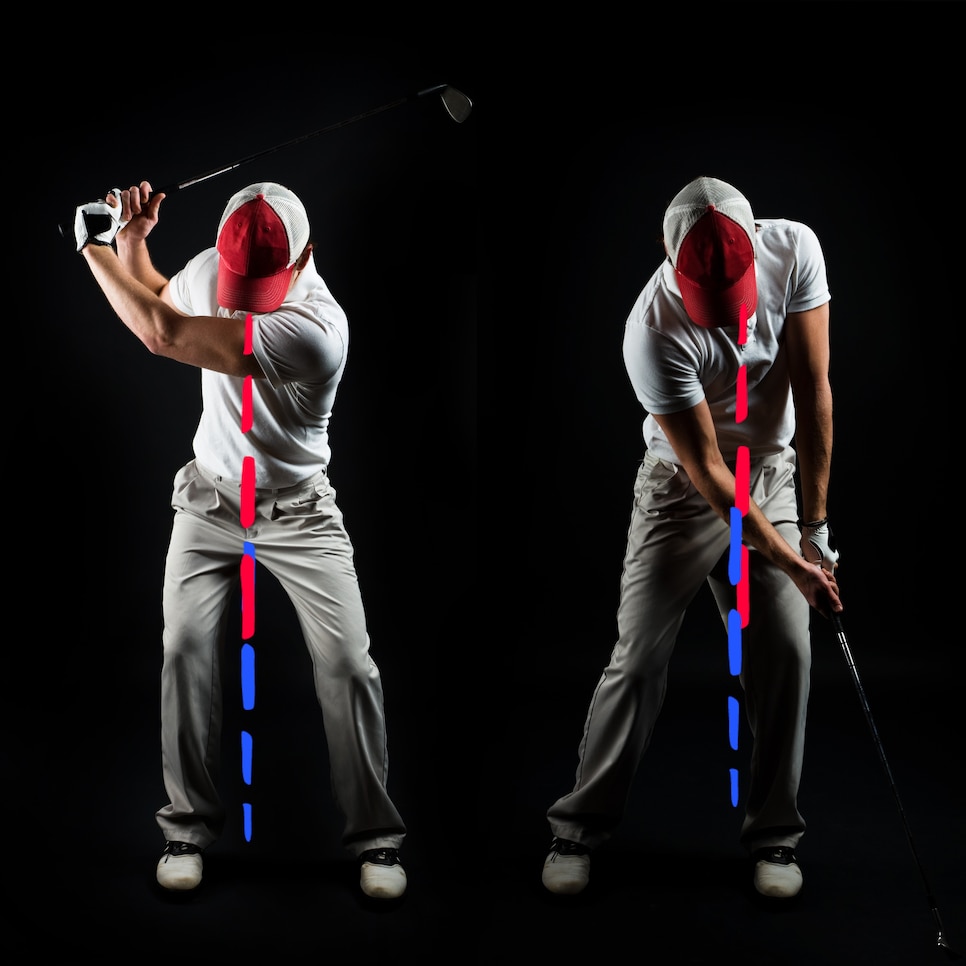Do you know the term “Sway Gap?”
Probably not, so jot it down in your golf memory books. It's an important term to know, and better yet, a useful one that can help improve your golf swing.
When we make a golf swing, our upper and lower bodies sway back and forth, or side-to-side. But your upper and lower bodies don't sway back and forth the same amount. Sway Gap is a term coined by SportsBox AI, and that's what it measures: the difference between how much your upper and lower body sways.
Why should you care?
Well, amateur golfers tend to have a sway gap that's too small, meaning that their upper and lower bodies move too much together.
The easiest way to see this is by tracking the center of a golfer's pelvis, and the center of a golfer's upper body. Notice at the top of the backswing and at impact with the golfer below, his upper and lower bodies are both on top of each other.

arsenik
The same thing is happening with this poor golfer's swing.

boggy22
Again, notice how his upper and lower body are stacked basically on top of each other at the top of the backswing. The sway gap between his upper and lower bodies is essentially zero.
This is a problem, because if your upper and lower bodies are sitting directly on top of each other on the backswing, it can put a lot of pressure on your lower back as you turn. Then, on the downswing, it can cause golfers to get steep, over the top, and chop down on the ball.
Sway Gap red flags
If you're a slicer reading this, there's a decent chance your Sway Gap is too small if you:
- Take huge divots
- Your miss is a pull, or pull-slice
- You hit pop-ups with your driver

Compare it to someone like Nick Dunlap, the two-time tour winner who notched another top-5 finish at the FedEx St. Jude Classic last week, and you'll see the difference.
This video was from our cover shoot with Dunlap back in January. Notice how on the backswing, his upper body moves slightly behind his pelvis. And by impact, his hips move even further ahead of his upper body.

I ran the numbers on this swing and SportsBox said Dunlap's upper body is about 2.5 inches behind his lower body at the top of the backswing, and his upper body is about 6.5 inches behind his lower body at impact.
Yes, you can overdo this move. But Dunlap's numbers were right in the sweet spot for both, and a good general guideline for the rest of us to aspire to.
Some stuff that can help
A bigger sway gap will help us hit more up on the ball and move better, and here are a few things that may help you along the way:
- Golf Digest Best in State teacher Jeff Smith, who works with PGA Tour player Max Homa, talks about how they worked on it recently.
- Golf Digest No. 1-ranked teacher Mark Blackburn talks about something similar here.
- Golf Digest Best in State teacher Joe Plecker demonstrates the move below: Hips forward, head back.
